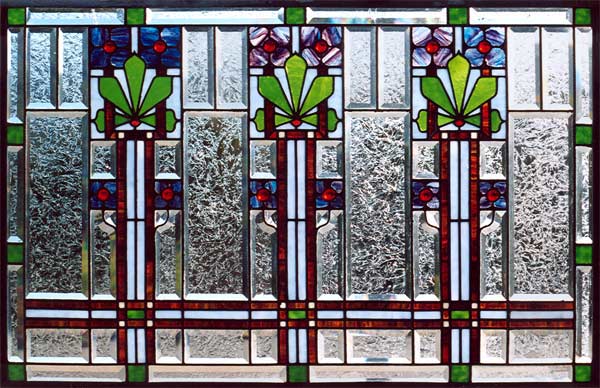

 rt Deco was named
after the Exposition International des Arts
Decoratifs
et Industriels Modernes, an exhibition held in Paris in 1925. The Art Deco
style is recognized as the quintessential decorative style of the 1920’s
and 1930’s.
During the exciting years that Art Deco was developed it was called Art Moderne
or Art Contemporain. Art Deco is a symmetrical, rectilinear style which re-introduced
classical motifs in futuristic ways.
rt Deco was named
after the Exposition International des Arts
Decoratifs
et Industriels Modernes, an exhibition held in Paris in 1925. The Art Deco
style is recognized as the quintessential decorative style of the 1920’s
and 1930’s.
During the exciting years that Art Deco was developed it was called Art Moderne
or Art Contemporain. Art Deco is a symmetrical, rectilinear style which re-introduced
classical motifs in futuristic ways.
 Contemporary artists sought to create and establish an art expressive of
their fast-moving times. This meant the breaking down of traditional patterns
and developing new patterns to reflect the element of “speed.” The
speed of the car, the locomotive, and especially the airplane, changed the
manner in which objects were seen--and this brought about changes in their
form and design. For example, people would be depicted in a moving open automobile
with their hair and scarves pinned straight back in the wind. Race cars were
drawn as streamlined as possible and were made to look even faster when paired
with simple graphics such as lighting bolts. Art Deco lines evolved to look
sleek, fast and/or modern. To capture the eye of the speeding passerby line
was made simpler, forms bolder, and color purer and more intense.
Contemporary artists sought to create and establish an art expressive of
their fast-moving times. This meant the breaking down of traditional patterns
and developing new patterns to reflect the element of “speed.” The
speed of the car, the locomotive, and especially the airplane, changed the
manner in which objects were seen--and this brought about changes in their
form and design. For example, people would be depicted in a moving open automobile
with their hair and scarves pinned straight back in the wind. Race cars were
drawn as streamlined as possible and were made to look even faster when paired
with simple graphics such as lighting bolts. Art Deco lines evolved to look
sleek, fast and/or modern. To capture the eye of the speeding passerby line
was made simpler, forms bolder, and color purer and more intense.
 Speed and dynamics are characteristics of the engine, and therefore machinery
became an inspiration to many artists. The force of line and form of industrial
machines was introduced into advertising, packaging, magazine covers and
mass produced consumer goods.
Speed and dynamics are characteristics of the engine, and therefore machinery
became an inspiration to many artists. The force of line and form of industrial
machines was introduced into advertising, packaging, magazine covers and
mass produced consumer goods.
Much of the world mistakenly thought this radically modern design movement to be of purely French creation. However, restless artists and designers elsewhere in Western Europe developed their own independently-inspired versions of Deco. Highly dedicated group movements, such as the German “Werkbunds” and the “Wiener Werkstatte” of Vienna, dynamically inluenced the direction of modern design forever. The United States jumped in early to generate its own vibrant forms of Art Deco, with New York being the center. The jagged geometric architecture of New York’s remarkable Chysler Building and the perenially chic interior of Radio City Music Hall turn heads now as they did in the 1930’s.

 There are two distinct forms of Art Deco: The graceful curvilinear form best
expressed by designers such as René Lalique and Paul Follot; the
sleek, functional machine-inspired form practiced by upstart designers
like Djo-bourgeois. Some will argue to include other sub-categorical forms,
which are combinations of the two essential forms I listed. Do understand
that, as in all periods throughout modern design history, other non-Deco
active decorative art forms coexisted during the 1920s and 1930s.
There are two distinct forms of Art Deco: The graceful curvilinear form best
expressed by designers such as René Lalique and Paul Follot; the
sleek, functional machine-inspired form practiced by upstart designers
like Djo-bourgeois. Some will argue to include other sub-categorical forms,
which are combinations of the two essential forms I listed. Do understand
that, as in all periods throughout modern design history, other non-Deco
active decorative art forms coexisted during the 1920s and 1930s.
 In 1922, the opening of Tutankhamen’s tomb bought about an effect
on designers similar to that of the discovery of Pompeii and Herculaneum
in the eighteenth century and of Napoleon’s Egyptian campaign early
in the nineteenth century. The Egyptian influence was especially noticeable
in the decorative arts and in jewelry, and movie theaters in both America
and England were redecorated in Egyptian style.
In 1922, the opening of Tutankhamen’s tomb bought about an effect
on designers similar to that of the discovery of Pompeii and Herculaneum
in the eighteenth century and of Napoleon’s Egyptian campaign early
in the nineteenth century. The Egyptian influence was especially noticeable
in the decorative arts and in jewelry, and movie theaters in both America
and England were redecorated in Egyptian style.
By the end of the 1920’s, the graceful femininity that had typified the first form Art Deco began to change. Popular early motifs had been geometric roses, garlands and baskets of flowers, fountains and jets of water, doves, female deer and nudes. The motifs gave way to newer ones as Art Deco evolved in the 1930’s. Cubism became the dominant influence, and the new young designers favored the stark simplicity, austerity and innovations of modern life and industry. Curves gave way to angularity and motifs of design tended to be more dynamic. Figures were shown in straining positions with outstretched hands and streaming hair. The sun’s rays cut through the sky and clouds raced in the wind. Lightning bolts, greyhounds, automobiles and airplanes, which exemplified speed, were popular motifs.

